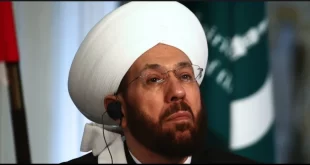April 26, 2018, The Irish Times – Michael Jansen

Syria may be the only country in recent times to rebuild before a devastating war ends. Aleppo, Syria’s former commercial powerhouse, has been transformed during the seven months since I last visited.
The roar and throb of generators has been partially silenced by restored electricity in the formerly divided city’s western neighbourhoods, which were retained by the government after Free Syrian Army rebels seized the eastern sector in July 2012.
Water flows from the distant Euphrates river through a channel and pipes into homes, businesses and factories. Traffic is heavy, petrol is readily available. Hotels are filled with conferences and visiting delegations. French doctors are here at present.
While there is still no airport, thousands of people come and go and supplies are brought along a route bypassing the Raqqa battleground which runs along the outer edge of al-Qaeda-dominated countryside and Iblib province. The chief perils on the journey are massive lorries bringing essential supplies.
The damaged eastern districts of Aleppo, where jihadis replaced rebels, had a population of two million before the war. Almost all civilians left during the conflict but half a million have returned. The sector is both a market place and building site. Shops have reopened along the battered but not bowed main street where the sole unscathed shop became a beacon for entrepreneurs.
After the Syrian army ousted insurgents and jihadis last December, Fahd Aziz Hokan found his patisserie untouched by bombs and mortars and his oven primed for baking. Today he has added salty pastries to his delicate sweet confections. “Raw materials cost the same,” he says, “so prices are no higher.”
Shopkeepers and artisans
Five months ago, his family moved back from the west. The city’s tenacious, four millennia-old commercial spirit has been revived, particularly among small shopkeepers and artisans.

Surviving stalls and workshops in Aleppo’s Old City, a magnet for local folk and tourists, are opening but at least 30 per cent of the area, a former front line, has been totally destroyed. Elegant hotels and restaurants lodged in 18th and 19th-century Ottoman mansions are heaps of broken stones and powdered plaster.
Workmen clear rubble from ruins but reusable blocks of stone are carefully placed in low walls on the sides of streets and alleyways. Rebuilding means recycling for thrifty Aleppines. They have no alternative. There is no Marshall Plan for Syria.
Aleppo’s newest industrial estate, Shaikh Najjar, a vast wasteland of scrub and bomb-holed and gutted factories, is 10km from the city. Plants manufacturing a wide range of goods were pounded and pillaged. Machinery was allegedly transported north to Turkey.
The Taha and Barakat glass factory stands next to a warehouse for humanitarian aid where lorries deposit and load parcels destined for impoverished and displaced families. The factory escaped the bombers and looters but ceased production in November 2011, says Mahmoud Hallaq, as he shows us around.

“This was the largest glass factory in the region. We exported to Saudi Arabia, Jordan, Iraq and Lebanon. We closed because the line has to operate 24 hours, seven days a week.”
Power cuts and the lack of sand from the town of al- Qaryatayn, 279km away, made it impossible to continue. Manufacturing was a Syria-wide endeavour disrupted when the circulation of materials ceased.
Rusty and dusty
The two, now rusty and dusty, automated lines of Chinese manufacture produced a total of 8,000m of glass a day, Hallaq says. “We had three work shifts of eight hours. We employed 250 workers in the factory and another 250 as drivers and in other jobs. Senior staff were paid $1,500 a month and workers $350-$400, high salaries for Syria.”
Hallaq sighs: “I was the chief engineer; now I’m the guard.”
If the government meets its pledge to provide a stable electricity supply by the year’s end, the plant could restart. Taha and Barakat are fortunate their massive, heavy equipment stymied looters.
The chairman of Aleppo’s Chamber of Industry, Fares al-Shehabi, says the war has “done devastating damage to Aleppo’s 40,000 factories”. Nevertheless, 10,000 factories in the industrial estates are working as well as 80 for textiles and food in Aleppo city.
He has turned his pillaged olive oil factory into a free school for 1,600 children of workers. “The best way to fight [jihadis] is secular education,” he says.
Aleppo factory owners have filed a case in the European Court of Human Rights against Turkey and have produced “solid evidence” it was involved directly in the looting of factories and the transport of equipment across the border.
“The case is being followed up by lawyers,” says Shehabi, who took his engineering degrees in Columbus, Ohio. “Sanctions are obstacles to the rebuilding of the country’s infrastructure and affect every citizen. Post-war contracts will be given to countries that did not make war on Syria: Russia, Iran, China and Brazil. ”
Death and devastation
Suffering six years of war has made many Syrians still in the country, even vocal critics of the government, bitter against outside powers which have trained, armed and financed rebels and jihadis whom these Syrians blame for death and devastation rather than Damascus.

But now Aleppo’s 5,000-year-old citadel is besieged in the evenings by cheerful families seeking simple pleasures rather than by armed men bent on conquest. Vendors come with boiled and roasted ears of sweetcorn, kebabs, and puffs of pink cotton candy.
Cars vye for parking spaces, motorbikes raise dust from the road, children plead for sweets and pull parents from cart to cart. The popular outdoor restaurant next to the ruins of the Carlton Hotel is packed.
“People used to come here at four in the morning to watch the sun rise, drink tea and smoke shisha,” said friend Fadi as the rattle of machine-gun fire reminds us the war is not quite over. No one flinches or flees.
 Syria Support Movement solidarity with the Syrian people
Syria Support Movement solidarity with the Syrian people




